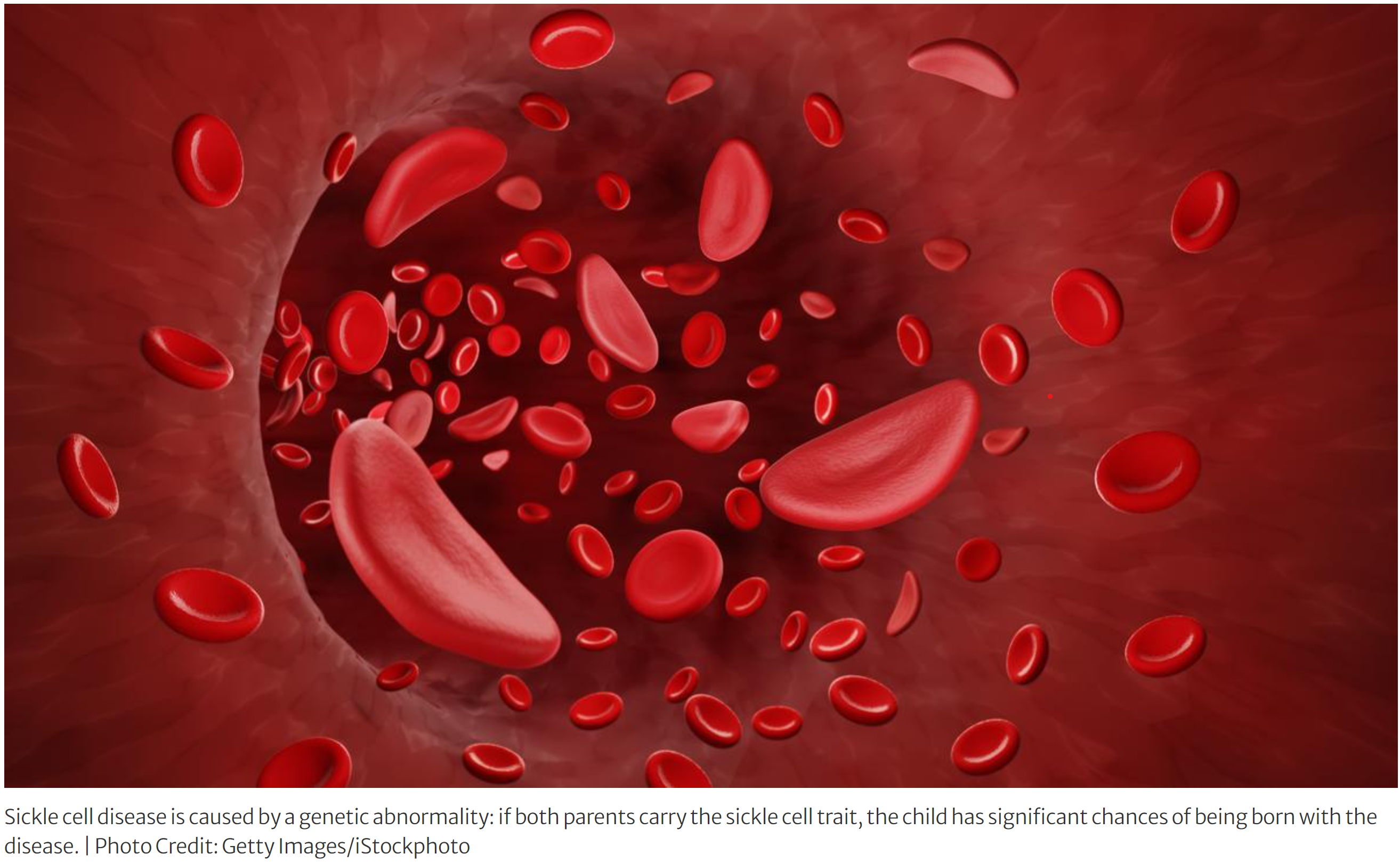India’s sickle cell challenge

- 12 Sep 2024
In News:
Last year, Prime Minister Narendra Modi launched the National Sickle Cell Anaemia Elimination Mission to eliminate sickle cell disease as a public health problem by 2047, from Shahdol, Madhya Pradesh.
What is Sickle Cell Disease?
- It is a genetic blood disorder that affects the shape of red blood cells. Normally, red blood cells are round and flexible, but in sickle cell disease, they become stiff and crescent-shaped, resembling a sickle.
- This abnormal shape makes it difficult for these cells to travel smoothly through blood vessels, leading to blockages and various health problems.
- It is caused by a mutation in the gene that tells the body how to make hemoglobin, the protein in red blood cells that carries oxygen.
- Both parents must pass down the defective gene for a child to develop the disease.
- If a person inherits the gene from just one parent, they have sickle cell trait and can pass the gene to their children but usually do not experience symptoms.
- Symptoms:
- Episodes of severe pain, called pain crises, typically in the chest, joints, and bones.
- Fatigue and anemia, due to the rapid breakdown of red blood cells.
- Swelling in the hands and feet, caused by the sickle-shaped cells blocking blood flow.
- Frequent infections, as the spleen, which helps fight infection, may be damaged by the disease.
- Delayed growth and puberty in children, due to chronic anemia.
- Diagnosis:
- It is usually diagnosed through a blood test. Newborns are routinely screened for the disease in many countries.
- The test checks for the presence of hemoglobin S, the defective form of hemoglobin that causes sickle cell disease.
- Treatment:
- While there is no universal cure for sickle cell disease, treatments can help manage symptoms and reduce complications.
- Pain relief medications for pain crises.
- Blood transfusions to treat anemia and prevent stroke.
- Hydroxyurea, a medication that can reduce the frequency of pain crises and the need for blood transfusions.
- Bone marrow or stem cell transplants, which can potentially cure the disease but are not suitable for all patients due to risks and availability of donors.
- Challenges in India
- India, with over a million affected individuals, faces the world’s second largest burden of sickle cell disease, primarily affecting tribal regions across Odisha, Jharkhand, Chhattisgarh, Madhya Pradesh, and Maharashtra. Only 18% of those affected receive consistent treatment due to significant drop-offs at diagnosis and adherence stages. Diagnosis is hindered by stigma and reliance on traditional healers, with a lack of trust in the public healthcare system. Treatment adherence is also poor due to the absence of a permanent cure, inadequate supply of essential medications like hydroxyurea, and logistical challenges, including long travel distances for medicine. Additionally, vaccination coverage, which helps improve patients' quality of life, remains insufficient.
The way ahead
- It is important to reduce the stigma related to the disease and build trust in public health institutions. Awareness should be raised through targeted media campaigns to bust specific myths (which vary by region and tribe).
- Second, given that cases are often missed and diagnosis delayed, there could be increasing screening for newborns. This strategy is low-cost with a high pay-off and would especially be effective in areas where the condition is endemic.
- Third, drugs as well as adherence support must be available close to patients, in the nearest health and wellness centres. For complications, interdisciplinary centres of excellence at the district/division levels should be made operational.
- Fourth, ensuring that all known patients receive approved vaccines will be crucial; this may require catch-up vaccination programmes.
- Fifth, health in tribal areas should be operationally strengthened by factoring in conditions unique to these areas. Healthcare should also be adequately funded.
- Finally, research should be conducted to better understand the disease and its pathways in India, and to develop new treatments. Philanthropists and members of civil society must play a catalytic role, and work with the Central and State governments.
